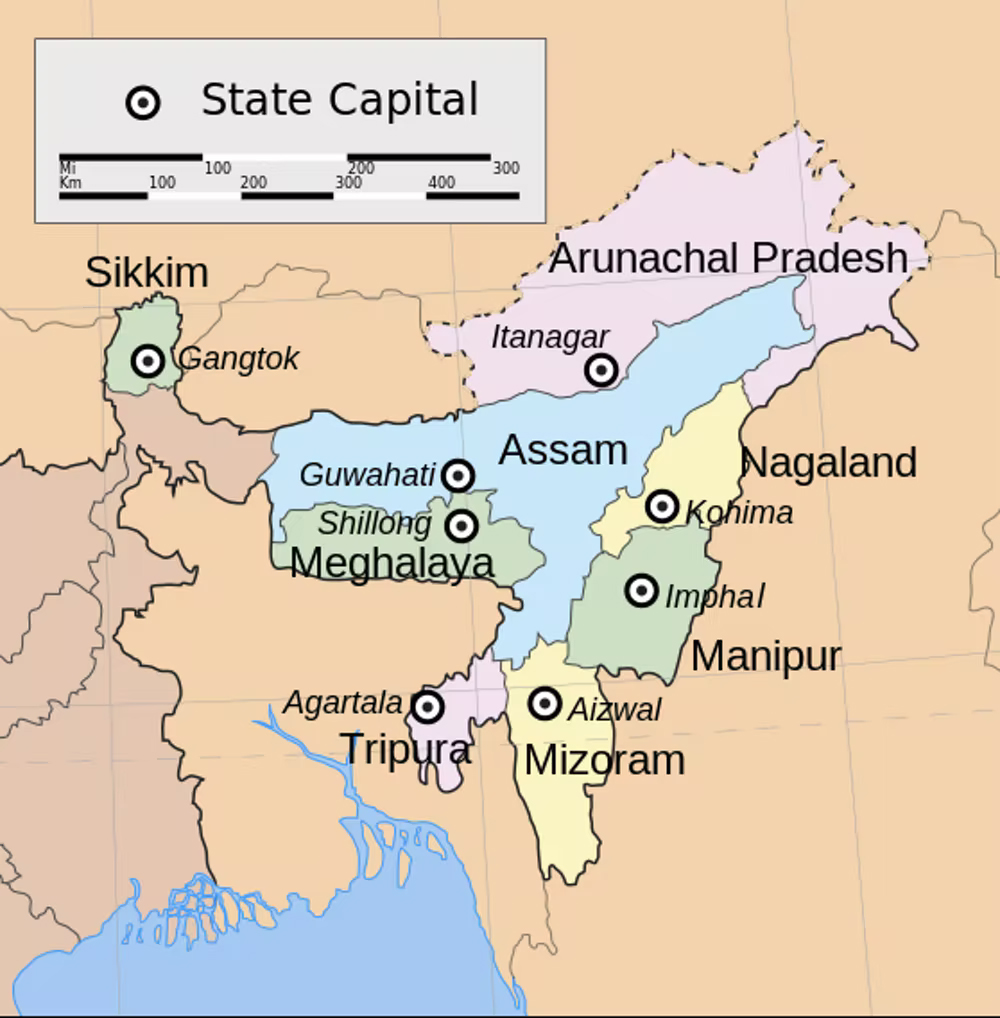World History
Kohima War Cemetery
- 18 Jan 2022
- 5 min read
For Prelims: Kohima War Cemetery, World War II, Commonwealth War Graves Commission, Indian National Army.
For mains: World War II, Significance of North East India in World War II
Why in News
Recently, the United Kingdom-based Commonwealth War Graves Commission (CWGC) has listed five sites with unusual features. These sites are associated with World War I and World War II.
- Nagaland capital Kohima is included in the list because of the Kohima War Cemetery.
Commonwealth War Graves Commission
- CWGC is an intergovernmental organisation of six member-states ( Australia, Canada, India, New Zealand, South Africa, United Kingdom) who ensure the men and women who died in the wars will never be forgotten.
- It was formed in 1917 as the Imperial War Graves Commission. However the present name was given in 1960.
- Its headquarters is situated in Maidenhead, UK.
Key Points
- About:
- Nagaland’s capital Kohima probably has the only cemetery on earth that sports a tennis court.
- The Kohima War Cemetery is one of 23,000 World War graves across the continents maintained by the CWGC.
- Formation of the Cemetery:
- On 3rd April 1944, a Japanese force of 15,000 attacked Kohima and its 2,500-strong force.
- It led to two weeks of difficult, bloody fighting as the defending forces were pushed back to the former house of the British Deputy Commissioner.
- The lawn of this house had a tennis court where the British officers played for recreation.
- The surviving defenders, encamped around the garden tennis court, prepared for their final stand. As the Japanese forces prepared to attack, they were attacked in turn by the lead tanks of a relief force, saving the defenders and pushing the attackers back.
- Despite this setback, the Japanese force continued to fight for Kohima before they were finally forced to withdraw in May 1944.
- Those who had fallen in the defence of Kohima were buried on the battlefield, which later became a permanent CWGC cemetery, with further burials from the surrounding areas.
- Designer Colin St. Clair Oakes incorporated the tennis court into the design of the cemetery.
- Other Cemeteries in the List:
- World War I “crater cemeteries” – Zivy Crater and Litchfield Crater – in the Pas de Calais region in France.
- Nicosia (Waynes Keep) Cemetery or the “cemetery in no man’s land” in Cyprus.
Significance of Kohima in World War II
- Present-day Nagaland and adjoining Manipur comprised the only theatre of World War II in the Indian subcontinent.

- In 1944, following hard fighting in the Burmese jungle, the Japanese forces in the region pushed across the Chindwin River and into India. In their path was the Fourteenth Army, made up of forces from across the Commonwealth.
- This invasion hinged upon two key points, (Manipur capital) Imphal and Kohima. Defeat for the Fourteenth Army here meant that the Japanese could strike further into India.
- Kohima was of key strategic importance, at the highest point of the pass through the jungle mountains to Dimapur, now Nagaland’s commercial hub adjoining Assam.
- The fall of Dimapur would have meant leaving the Allied defenders of Imphal at the mercy of the Japanese soldiers fighting alongside Subhash Chandra Bose’s Indian National Army.
World War II
- About:
- It was a conflict that involved virtually every part of the world during the years 1939–45.
- It ended six years and one day after Germany’s invasion of Poland on 1st September, 1939, sparked the 20th century’s second global conflict.
- By the time it concluded on the deck of an American warship on 2nd September, 1945, WW II had claimed the lives of an estimated 60-80 million people, approximately 3% of the world’s population.
- The vast majority of those who died were civilians, including 6 million Jews killed in Nazi concentration camps during the Holocaust.
- Principal Belligerents:
- Axis powers—Germany, Italy, and Japan.
- Allies—France, Great Britain, the United States, the Soviet Union, and, to a lesser extent, China.




